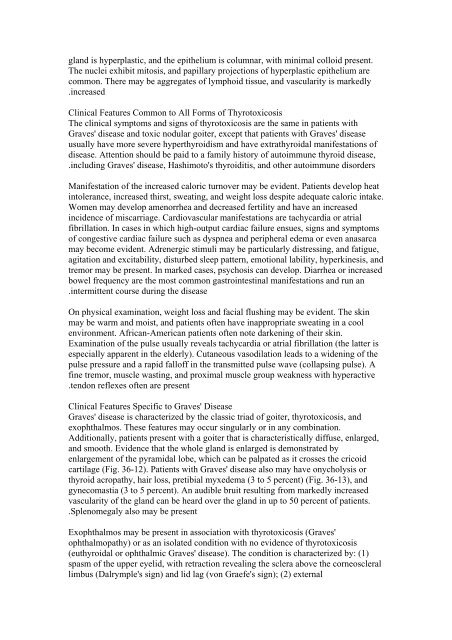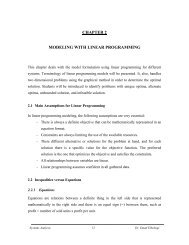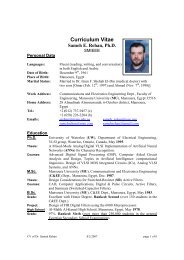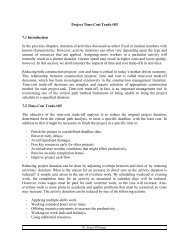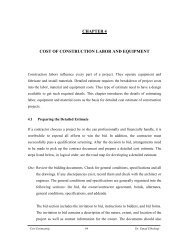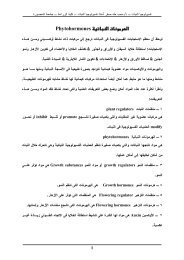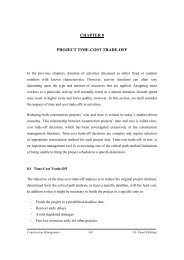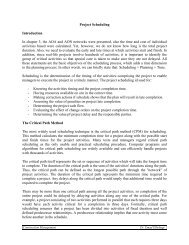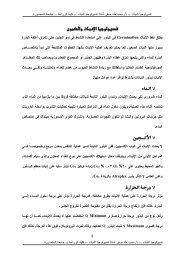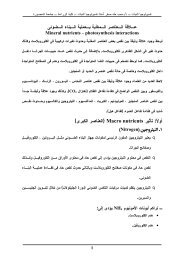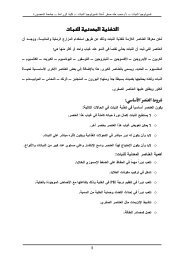Thyroid and Parathyroid
Thyroid and Parathyroid
Thyroid and Parathyroid
You also want an ePaper? Increase the reach of your titles
YUMPU automatically turns print PDFs into web optimized ePapers that Google loves.
gl<strong>and</strong> is hyperplastic, <strong>and</strong> the epithelium is columnar, with minimal colloid present.<br />
The nuclei exhibit mitosis, <strong>and</strong> papillary projections of hyperplastic epithelium are<br />
common. There may be aggregates of lymphoid tissue, <strong>and</strong> vascularity is markedly<br />
. increased<br />
Clinical Features Common to All Forms of Thyrotoxicosis<br />
The clinical symptoms <strong>and</strong> signs of thyrotoxicosis are the same in patients with<br />
Graves' disease <strong>and</strong> toxic nodular goiter, except that patients with Graves' disease<br />
usually have more severe hyperthyroidism <strong>and</strong> have extrathyroidal manifestations of<br />
disease. Attention should be paid to a family history of autoimmune thyroid disease,<br />
. including Graves' disease, Hashimoto's thyroiditis, <strong>and</strong> other autoimmune disorders<br />
Manifestation of the increased caloric turnover may be evident. Patients develop heat<br />
intolerance, increased thirst, sweating, <strong>and</strong> weight loss despite adequate caloric intake.<br />
Women may develop amenorrhea <strong>and</strong> decreased fertility <strong>and</strong> have an increased<br />
incidence of miscarriage. Cardiovascular manifestations are tachycardia or atrial<br />
fibrillation. In cases in which high-output cardiac failure ensues, signs <strong>and</strong> symptoms<br />
of congestive cardiac failure such as dyspnea <strong>and</strong> peripheral edema or even anasarca<br />
may become evident. Adrenergic stimuli may be particularly distressing, <strong>and</strong> fatigue,<br />
agitation <strong>and</strong> excitability, disturbed sleep pattern, emotional lability, hyperkinesis, <strong>and</strong><br />
tremor may be present. In marked cases, psychosis can develop. Diarrhea or increased<br />
bowel frequency are the most common gastrointestinal manifestations <strong>and</strong> run an<br />
. intermittent course during the disease<br />
On physical examination, weight loss <strong>and</strong> facial flushing may be evident. The skin<br />
may be warm <strong>and</strong> moist, <strong>and</strong> patients often have inappropriate sweating in a cool<br />
environment. African-American patients often note darkening of their skin.<br />
Examination of the pulse usually reveals tachycardia or atrial fibrillation (the latter is<br />
especially apparent in the elderly). Cutaneous vasodilation leads to a widening of the<br />
pulse pressure <strong>and</strong> a rapid falloff in the transmitted pulse wave (collapsing pulse). A<br />
fine tremor, muscle wasting, <strong>and</strong> proximal muscle group weakness with hyperactive<br />
. tendon reflexes often are present<br />
Clinical Features Specific to Graves' Disease<br />
Graves' disease is characterized by the classic triad of goiter, thyrotoxicosis, <strong>and</strong><br />
exophthalmos. These features may occur singularly or in any combination.<br />
Additionally, patients present with a goiter that is characteristically diffuse, enlarged,<br />
<strong>and</strong> smooth. Evidence that the whole gl<strong>and</strong> is enlarged is demonstrated by<br />
enlargement of the pyramidal lobe, which can be palpated as it crosses the cricoid<br />
cartilage (Fig. 36-12). Patients with Graves' disease also may have onycholysis or<br />
thyroid acropathy, hair loss, pretibial myxedema (3 to 5 percent) (Fig. 36-13), <strong>and</strong><br />
gynecomastia (3 to 5 percent). An audible bruit resulting from markedly increased<br />
vascularity of the gl<strong>and</strong> can be heard over the gl<strong>and</strong> in up to 50 percent of patients.<br />
. Splenomegaly also may be present<br />
Exophthalmos may be present in association with thyrotoxicosis (Graves'<br />
ophthalmopathy) or as an isolated condition with no evidence of thyrotoxicosis<br />
(euthyroidal or ophthalmic Graves' disease). The condition is characterized by: (1)<br />
spasm of the upper eyelid, with retraction revealing the sclera above the corneoscleral<br />
limbus (Dalrymple's sign) <strong>and</strong> lid lag (von Graefe's sign); (2) external


